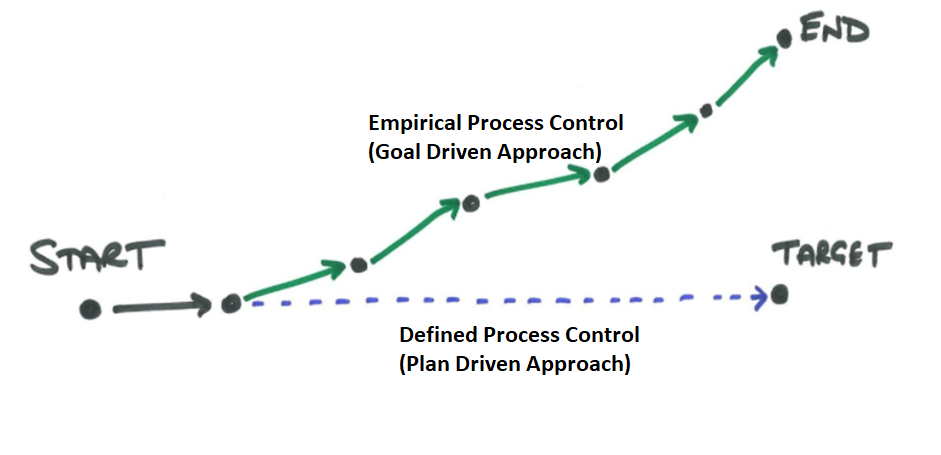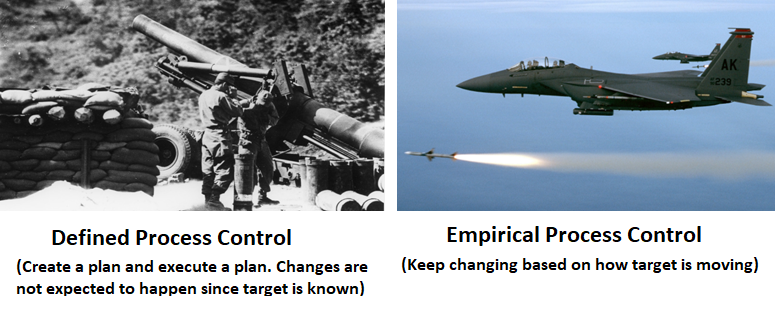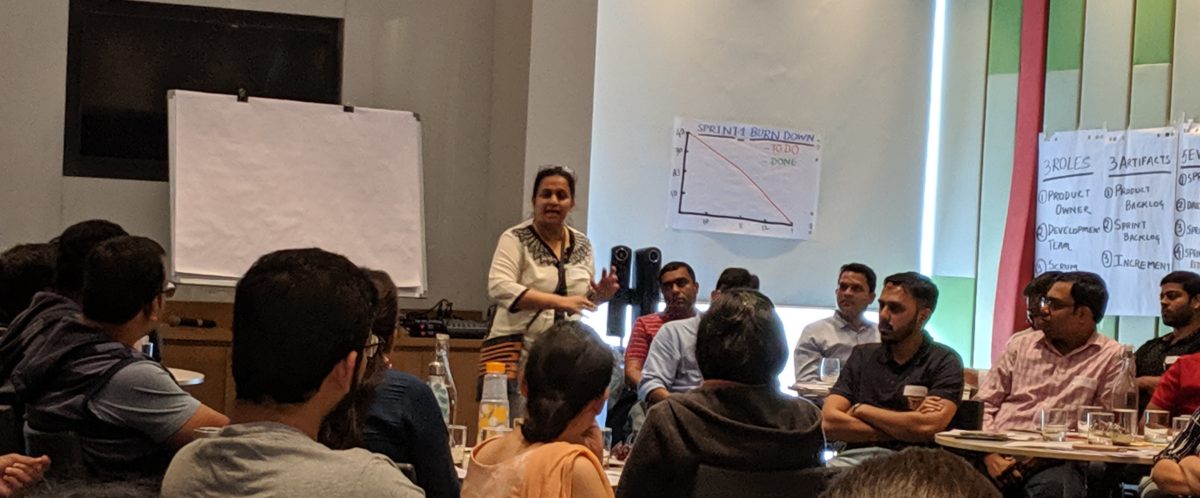There are two types of process control
- Defined Process Control – Plan driven way of doing things. Where the target (goal) is known, one can create a Plan and execute the plan.
- Empirical Process Control – Goal driven way of doing things. In this type of problem, the solution or requirements or both are unknown. So, one has to take decisions on something which has already happened. So, the decisions have to be taken on trial and error way. Try something, see if it works, if it doesn’t work then try it another way. Too much of upfront planning is of no use in this type of process control

In Scrum, decisions are made based on Empirical Process control. In Scrum we try observation and experimentation rather than on detailed upfront planning.
Transparency
Transparency allows all facets of any Scrum process to be observed by anyone. This promotes an easy and transparent flow of information throughout the organization and creates an open work culture.
Inspection
Inspection in Scrum is depicted through:
- Use of a common Scrumboard and other information radiators
- Collection of feedback from the customer and other stakeholders during the Develop Epic(s), Create Prioritized Product Backlog , and Conduct Release Planning processes.
- Inspection and approval of the Deliverables by the Product Owner and the customer in the Demonstrate and Validate Sprint process.
Adaptation
Adaptation happens as the Scrum Core Team and Stakeholders learn through transparency and inspection and then adapt by making improvements in the work they are doing.
A Metaphor on Empirical and Defined Process Control

